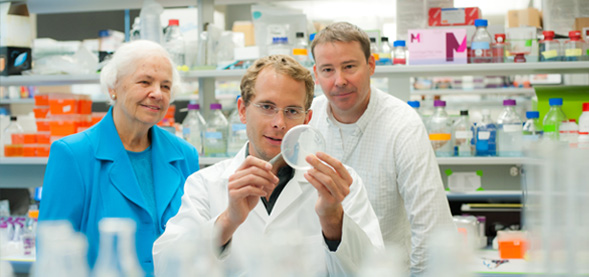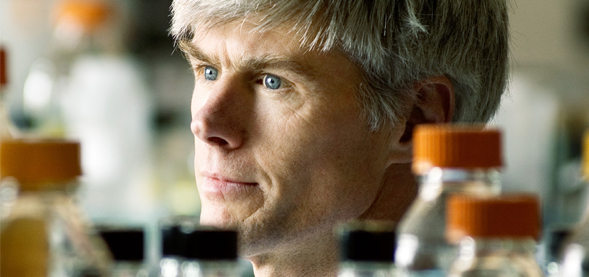 Structural Characterization of the DAXX N-Terminal Helical Bundle Domain and Its Complex with Rassf1C
Structural Characterization of the DAXX N-Terminal Helical Bundle Domain and Its Complex with Rassf1C
Authors: Eric Escobar-Cabrera, Desmond K.W. Lau, Serena Giovinazzi, Alexander M. Ishov, and Lawrence P. McIntosh. Lab of Lawrence McIntosh, Chemical Biology of Disease Research Group, Department of Biochemistry and Molecular Biology.
Published in Structure. 2010 Dec 8;18(12):1642-53. ![]() doi:10.1016/j.str.2010.09.016)
doi:10.1016/j.str.2010.09.016)
Summary: DAXX is a scaffold protein with diverse roles including transcription and cell cycle regulation. Using NMR spectroscopy, we demonstrate that the C-terminal half of DAXX is intrinsically disordered, whereas a folded domain is present near its N terminus. This domain forms a left-handed four-helix bundle (H1, H2, H4, H5). However, due to a crossover helix (H3), this topology differs from that of the Sin3 PAH domain, which to date has been used as a model for DAXX. The N-terminal residues of the tumor suppressor Rassf1C fold into an amphipathic α helix upon binding this DAXX domain via a shallow cleft along the flexible helices H2 and H5 (KD  60 μM). Based on a proposed DAXX recognition motif as hydrophobic residues preceded by negatively charged groups, we found that peptide models of p53 and Mdm2 also bound the helical bundle. These data provide a structural foundation for understanding the diverse functions of DAXX.
60 μM). Based on a proposed DAXX recognition motif as hydrophobic residues preceded by negatively charged groups, we found that peptide models of p53 and Mdm2 also bound the helical bundle. These data provide a structural foundation for understanding the diverse functions of DAXX.




